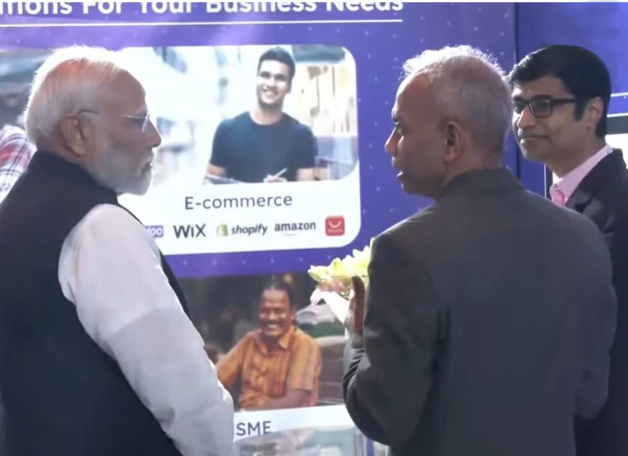India’s exporters often operate under tough financial conditions. Volatile global markets, long payment cycles, and, importantly, expensive short-term credit present challenges. Compared to competitors in economies like China, Vietnam, and Bangladesh, Indian exporters pay higher interest rates to finance raw materials, production, and shipping. This weakens their ability to price competitively in international tenders or fulfill bulk orders on time.
To address this, the Government of India introduced the Interest Equalisation Scheme (IES) in 2015. The objective is straightforward: reduce the cost of rupee-denominated export credit for eligible exporters by offering a partial interest subsidy.
This blog explains the scheme in plain terms, based on official RBI circulars, DGFT notifications, and actual banking procedures as of 2024–25. If you are exporting goods and financing your operations with bank credit, this scheme is worth understanding in depth.
What is Export Credit, and Why is it Crucial?
Export credit is short term working capital provided by banks to exporters. It supports the exporter at two key stages:
- Pre shipment (Packing Credit): Funds provided before the shipment of goods. Used to purchase inputs, pay for labor, process goods, and handle packaging or logistics.
- Post shipment Credit: Funds given after the shipment, covering the time until the overseas buyer makes the payment. This credit helps bridge the delay between dispatch and receipt of payment.
Export credit is almost always secured against export orders or confirmed invoices. It is a lifeline for small and medium exporters with limited cash reserves.
The Interest Equalisation Scheme (IES): An Overview
- Launched: April 1, 2015
- Administered by: DGFT and RBI
- Implemented through: Scheduled commercial banks
- Purpose: Lower interest rates on rupee-denominated export credit
- Mode of Operation: Banks apply reduced rates to qualifying exporters; RBI reimburses the difference later.
This scheme is currently governed by RBI Circular RBI/2023 24/35 and DGFT Public Notice No. 53/2023 24, along with subsequent advisories on implementation caps. Please note that recent updates from RBI and DGFT (as of July 2025 based on circulars/trade notices in late 2024 and mid 2025) indicate the scheme has seen extensions and modifications, notably a restriction of eligibility only to MSME manufacturer exporters from July 1, 2024, with non MSMEs not being eligible beyond June 30, 2024, and specific caps for the extended period. Exporters should always check the latest notifications from DGFT and RBI.
Who is Eligible under IES?
The scheme has two main beneficiary groups, with different rates and conditions, though eligibility has been refined:
- MSME Manufacturer Exporters
- Must be registered on the Udyam portal.
- Udyam details must be reflected in the DGFT IEC database.
- Eligible for a 3% interest reduction.
- Can export any manufactured goods (no product restriction).
- Annual cap: ₹50 lakh per IEC for FY 2024–25 (until December 31, 2024).
- Non MSME Manufacturer Exporters and Merchant Exporters
- As per recent updates, from July 1, 2024, only MSME Manufacturer exporters are eligible. Non MSME exporters are generally not eligible for benefits beyond June 30, 2024.
- Previously (before July 1, 2024), these groups were eligible for a 2% interest reduction on goods listed in the notified 410 HS codes, with an annual cap of ₹10 crore per IEC per financial year.
What Kind of Exports Are Eligible?
The scheme covers only physical goods that qualify as “originating in India.” This means:
- The goods must be manufactured in India, either fully or with substantial value addition.
- Use of imported raw materials is allowed if the final product undergoes sufficient processing in India.
- Services, software, project exports, and foreign currency export credit are excluded.
Sectors Covered Under the 410 HS Codes (for 2% benefit)
- Readymade garments and textiles
- Leather and leather goods
- Handicrafts
- Processed food items
- Ceramic and glassware
- Coir products
- Select engineering goods, plastics, and chemicals
The exact list of HS codes is published on DGFT’s website and should be verified before application. (Note: This list is primarily relevant for the earlier 2% benefit category, which is now restricted).
How to Apply for the IES Benefit
The scheme is not automatic. Exporters must apply for a Unique IES Identification Number (UIN) through the DGFT portal before availing export credit from any bank.
Step by Step Process:
Step 1: Register on DGFT Portal
- Visit https://www.dgft.gov.in.
- Log in using your IEC credentials.
- Ensure your profile is updated with:
- MSME/Udyam details (if applicable).
- Authorized contact info.
- Bank details.
Step 2: Apply for UIN
- Navigate to: Services → Interest Equalisation Scheme → Apply for UIN.
- Fill in:
- Exporter type (MSME / Merchant / Manufacturer).
- Product ITC HS code.
- Sector of export.
- Bank name.
- Upload: PDF copy of confirmed export order/invoice (under 1MB).
- Sign digitally using: Class 3 Digital Signature Certificate (DSC) or Aadhaar e sign.
- Pay the fee of ₹200 online.
- Upon successful submission, the DGFT issues a UIN valid for 12 months. The UIN is bank specific. If you are working with two banks, generate two separate UINs.
Step 3: Submit UIN to Your Bank
- Submit the DGFT issued UIN to your bank before taking any export credit.
- The bank will validate:
- Whether the exporter and product fall under the eligible category.
- Whether the export order qualifies.
- Once validated, the bank will apply the reduced interest rate directly to your eligible pre shipment or post shipment credit.
Step 4: Bank Processes Reimbursement
- Banks disburse credit at the reduced rate.
- RBI reimburses the interest equalisation amount to the bank after audit certification.
- Exporters are not required to interact with RBI or file claims themselves.
Real Life Example: How Much Can You Save?
Let’s say an MSME exporter in Moradabad receives a ₹1 crore export order for handicrafts. They take a 6 month pre shipment loan of ₹60 lakh at 9.5% annual interest.
- Without IES: Interest cost = ₹2.85 lakh
- With IES (3% benefit): Net interest rate = 6.5% → Interest cost = ₹1.95 lakh
- Net saving: ₹90,000 on just one order
Multiply that across multiple orders or a year’s worth of business, and the impact becomes substantial.
Important Restrictions and Conditions
- IES benefit is not retroactive. If you take export credit before getting the UIN, you cannot claim the benefit for that loan.
- UIN is valid for one bank only. You must apply again if you switch or use multiple banks.
- Cap enforcement: Banks will not apply benefits beyond ₹10 crore (or ₹50 lakh for MSMEs in FY 2024–25 until December 2024) per IEC per year.
- No benefit on foreign currency loans like buyer’s credit or overseas direct credit.
- Fund allocation limit: If the central fund gets exhausted during the financial year, banks may stop processing fresh IES benefits until the next allocation.
- Eligibility Shift (from July 1, 2024): Only MSME manufacturer exporters are generally eligible for fresh benefits. Non MSME manufacturer exporters and merchant exporters are largely excluded from new benefits after June 30, 2024.
Conclusion
The Interest Equalisation Scheme is a crucial tool for supporting Indian exporters. By directly lowering the cost of credit, it enhances the price competitiveness of Indian goods and services in the global market. This not only boosts export growth but also supports job creation, especially in labor-intensive sectors, contributing to India’s overall economic development.
For Indian businesses looking to expand their reach internationally, understanding and availing the Interest Equalisation Scheme can significantly improve profitability and competitiveness. Always stay updated with the latest notifications from DGFT and RBI regarding the scheme’s extension and modified norms.
Looking to streamline how you receive international payments?
BRISKPE is designed to simplify cross-border transactions for exporters and freelancers. With BRISKPE, you can receive international payments in major currencies directly into virtual accounts, often with competitive fees (typically under 1% including GST) and transparent exchange rates, getting your funds to your Indian bank account quickly.
Discover how BRISKPE can make your international payment process faster, clearer, and more economical.








